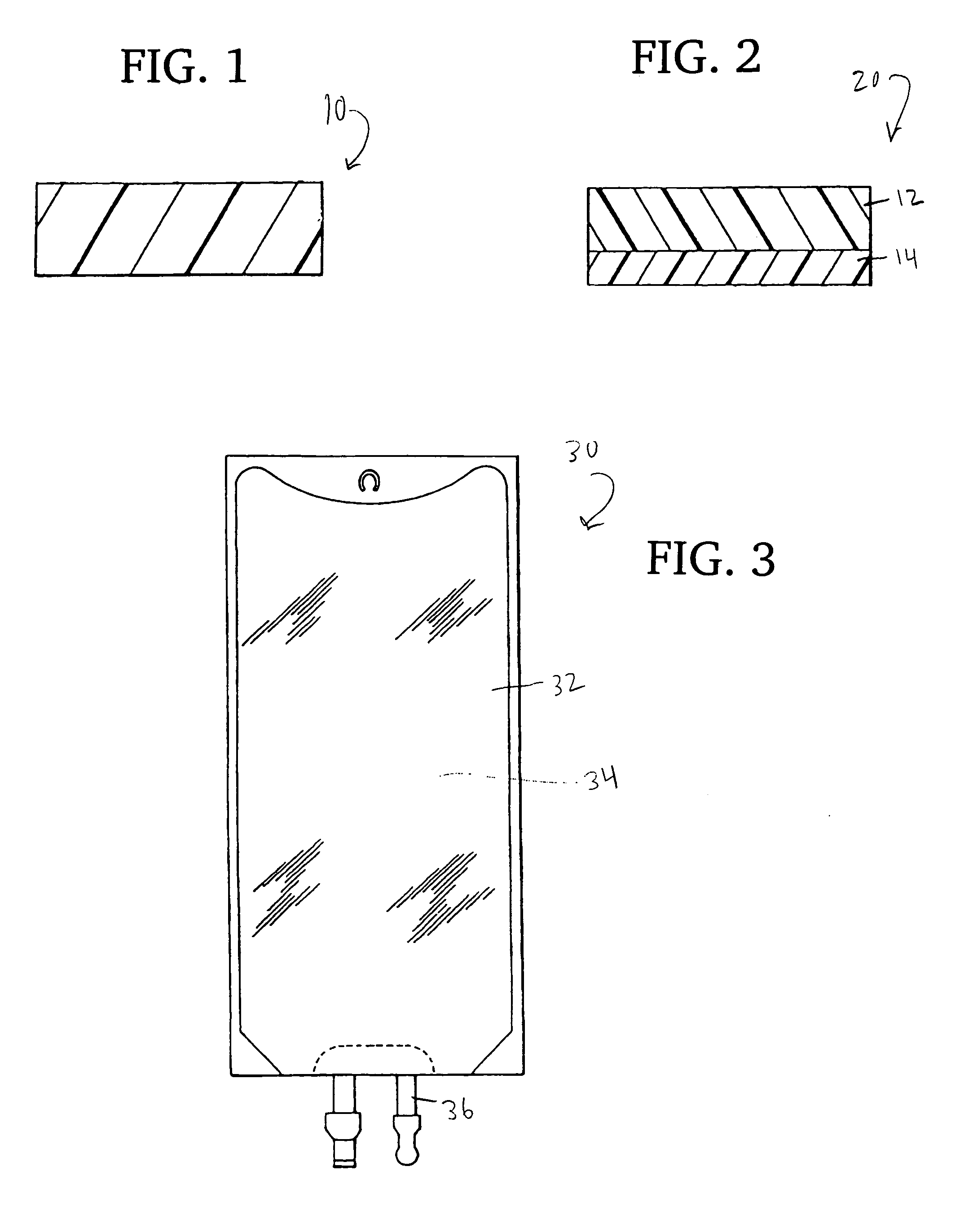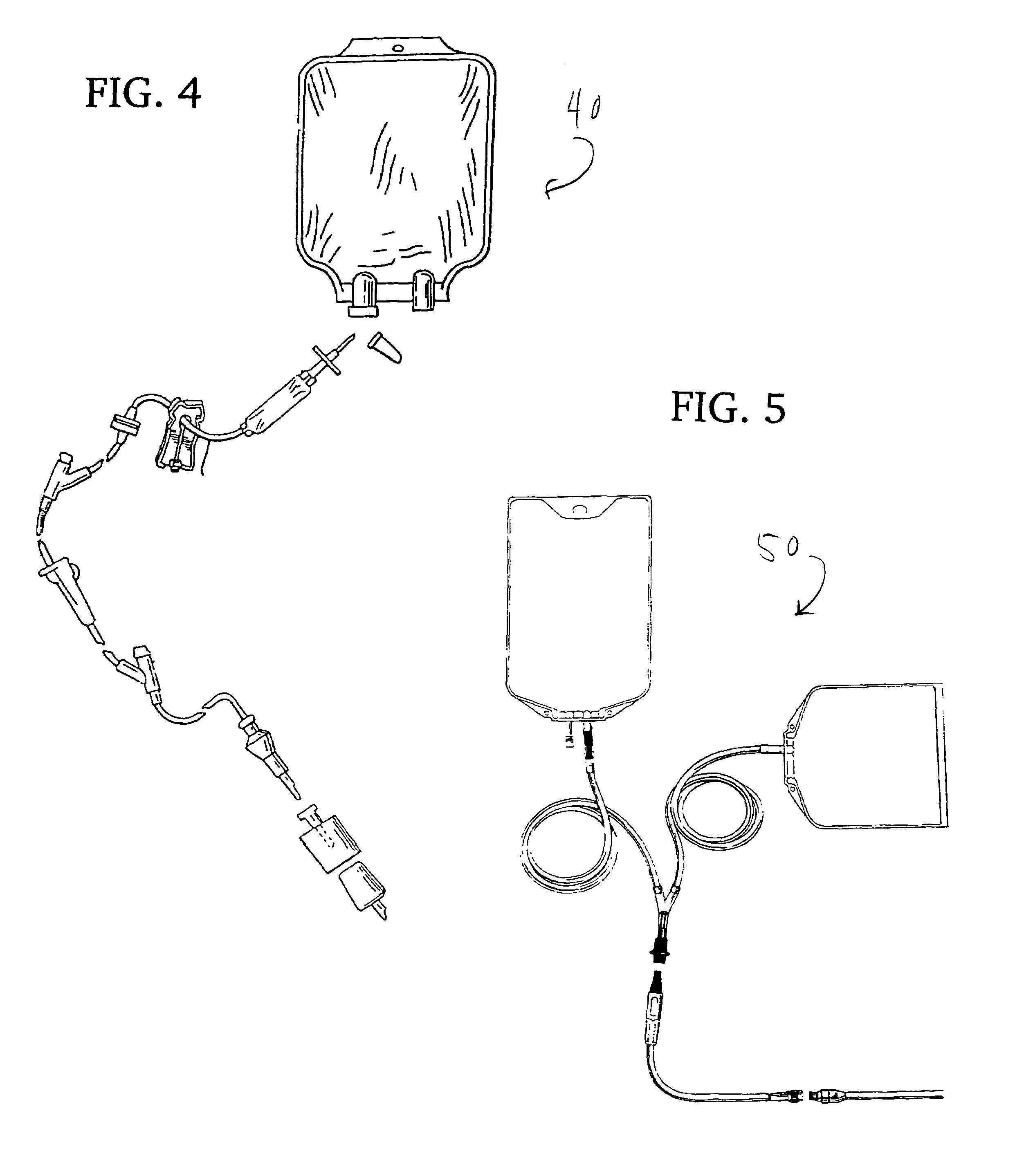Containers and peelable seal containers of new non-PVC material
a technology of non-pvc materials and containers, applied in the field of polymer blends, can solve the problems of incompatibility of pvc compounds with certain drugs, concerns about chlorine content and its effects on the environment, and the growing negative market perception of pvc in general
- Summary
- Abstract
- Description
- Claims
- Application Information
AI Technical Summary
Benefits of technology
Problems solved by technology
Method used
Image
Examples
Embodiment Construction
[0027]The present invention is susceptible of embodiments in many different forms. Preferred embodiments of the invention are disclosed with the understanding that the present disclosure is to be considered as an exemplification of the principles of the invention and is not intended to limit the broad aspects of the invention to the embodiments illustrated.
I. POLYMER BLENDS AND MONOLAYER FILMS THEREFROM
[0028]FIG. 1 shows a monolayer film 10 of the present invention. The monolayer film 10 is fabricated from a polymer blend having a first component and a second component.
[0029]The first component is selected from the group of: (1) ethylene and α-olefin interpolymers having a density of less than about 0.915 g / cc, (2) ethylene and lower alkyl acrylate interpolymers, (3) ethylene and lower alkyl substituted alkyl acrylate interpolymers and (4) ionic polymers, commonly referred to as ionomers. The first component is present in an amount from about 99% to about 55% by weight of the blend,...
PUM
| Property | Measurement | Unit |
|---|---|---|
| density | aaaaa | aaaaa |
| thickness | aaaaa | aaaaa |
| melting point temperature | aaaaa | aaaaa |
Abstract
Description
Claims
Application Information
 Login to View More
Login to View More - R&D
- Intellectual Property
- Life Sciences
- Materials
- Tech Scout
- Unparalleled Data Quality
- Higher Quality Content
- 60% Fewer Hallucinations
Browse by: Latest US Patents, China's latest patents, Technical Efficacy Thesaurus, Application Domain, Technology Topic, Popular Technical Reports.
© 2025 PatSnap. All rights reserved.Legal|Privacy policy|Modern Slavery Act Transparency Statement|Sitemap|About US| Contact US: help@patsnap.com



